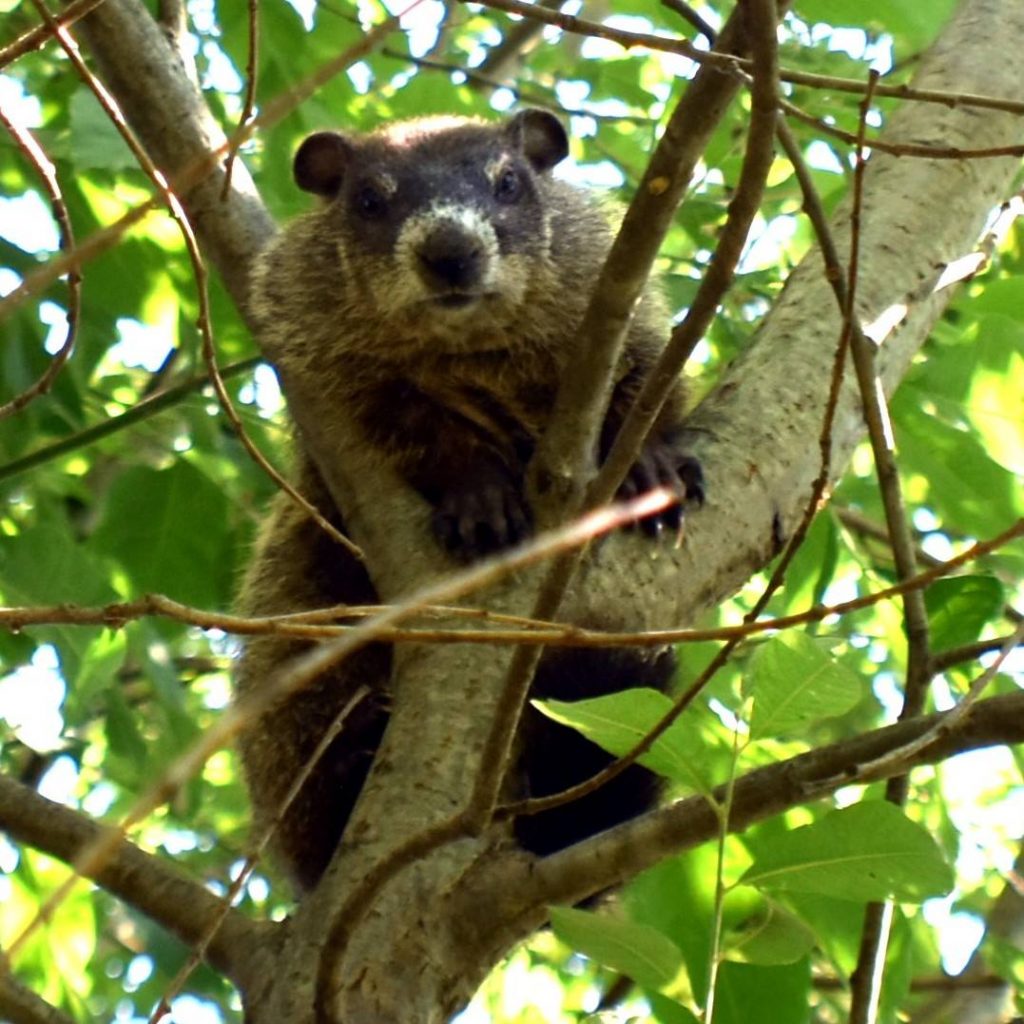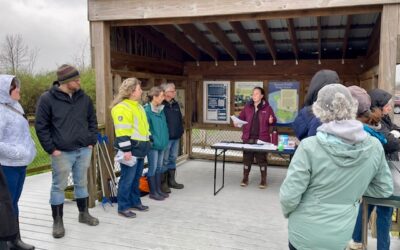
Many years ago, while walking across a meadow in Western New York, I found an animal clinging to the branches of a young apple tree. The animal and I were both stunned – we didn’t see each other in advance. Nearly 5 feet up the tree, the critter froze. At eye-level, I examined its face and I was stumped. It seemed completely unusual; the ears, the color, the climbing. I left wondering if I had seen a porcupine – which would have been rare.
This year, local photographer Richard Kauffman finally solved my mystery with the photo here. The brown puffball sometimes known as a woodchuck, usually has its face to the ground, hogging out on its favorite plants. But it can climb and swim, too. It can be hard to see that the animal’s forehead is dark gray, or that it has a white beard. The groundhog has also been named mouse-bear for its appearance when standing upright.
Like porcupines, squirrels and marmots, the groundhog is a rodent. Its long incisor teeth may be good for “chucking” or chomping or chewing wood – but that’s not the reason for its other name. Web sources say woodchuck comes from the native American word “wucack,” meaning digger.
Digging burrows is vital to the groundhog’s survival. As we know from celebrating Groundhog’s Day, these animals hibernate during the winter. Hibernation is like a deep sleep that helps animals survive without eating much. The groundhog’s burrow protects it from freezing weather and predators while it is asleep. The branching tunnels can be up to 20 feet long and 6 feet below ground. Groundhogs are not fast runners, so diving into one of their holes is their best defense against foxes, coyotes, and birds of prey.
But it’s when they wake up that makes us celebrate the groundhog. That tradition comes from the early German settlers in nearby Pennsylvania, who observed animal behavior to get clues about the weather. In Europe, they watched for when badgers came out of hibernation. In the eastern United States, groundhogs were more common. And no one welcomes the groundhog’s sign of spring more than those of us living in snowy upstate New York near Iroquois National Wildlife Refuge!
by Heidi Truschel





